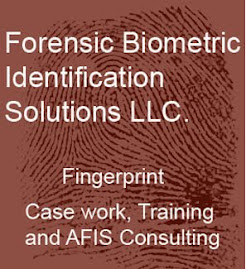When individuals look at the missed and bad identifications, the conversation usually moves to ACE-V to insure a proper fingerprint identification. Everyone is in agreement that if ACE-V is done correctly, bad fingerprint identifications should not occur. The problem is that bad fingerprint identifications occur and while everyone claims to use ACE-V, there are agencies and examiners who do not adhere to the procedure. Remember ACE-V prevents bad identifications and does nothing to prevent missed identifications.
If we look at the L.A. and Boston PD’s, we get a glimpse of what I think is one of the current problems; not all agencies are following ACE-V procedure as it was intended to be used. In the Boston case “Even the commander of the police department’s forensic technology division admitted the unit had little or no protocol or standardization of procedures. L.A “officials, described a poorly run operation, in which records and evidence were left lying around or misplaced, and supervisors "were stuck in the old way of doing things."In both instances you have large latent fingerprint operations, which were producing more latent fingerprint identifications than most state units. The policies and procedures were a priority and when you don't have a standard procedure errors will occur. Another pet peeve of mine was mentioned in Boston. "It's important that I say there are some people working in latent prints …who have really tried hard," O'Toole said. "I understand some have gone and paid on their own for training. There are some people who, the department failed them. They didn't receive appropriate training." The practice of not providing training opportunities at the local level did not only happen in Boston, unfortunately it occurs today in many local agencies and that is just not right. The latent fingerprint examiners should not have to pay for training to keep their skill level.
I think everyone involved in the judicial system will find agreement, all agencies should follow accepted practices and procedures when making a latent fingerprint identification (ACE-V). Additionally there should also be policies & procedures for proficiency testing to include a remediation fingerprint program to resolve any fingerprint training issues. What I've just indicated are found in the guidelines established by "The Scientific Working Group on Friction Ridge Analysis, Study and Technology (SWGFAST)". SWFAST has been around since 1997 and many agencies have ignored or put off utilizing the published and suggested guidelines. The guidelines were established by latent practitioners from across the country with input from all latent fingerprint examiners. The question becomes how can an agency be forced to comply and follow the guidelines? All agencies following the guidelines would benefit everyone involved in the courts and judicial system.
The agency with the ability to bring about this change, in my opinion, is the court. If the court required a periodic evaluation of policies and procedures by agencies appearing before them to insure compliance with SWGFAST guidelines many of the current problems would go away. If an agency wasn't compliant the court would not allow testimony from the agency until the non-compliance was corrected.
Bob McAuley
Dir. Operations/Training
Forensic Biometric Identification Solutions LLC.
Subscribe to:
Post Comments (Atom)






No comments:
Post a Comment